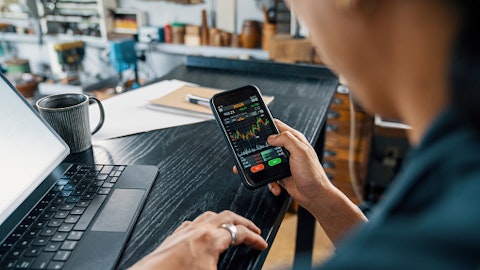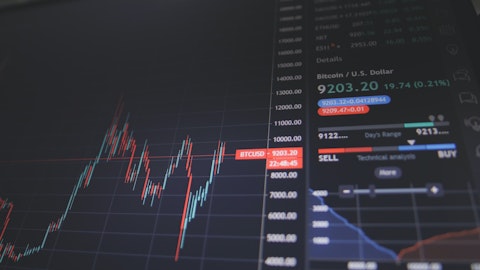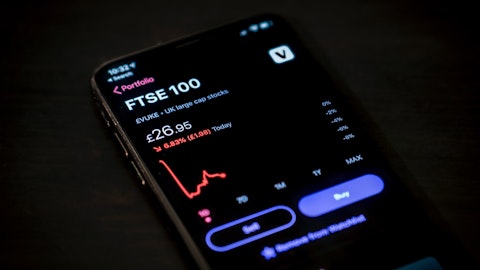Norm Miller : And we are seeing current freight costs get — approach very close to where they were pre-pandemic, the items being shipped today from Asia, certainly. But remember, we have to work through the inventory that we have that has that higher average weighted cost that George is talking about that will take a number of months to work through.
Brian Nagel : Got it. And if I could — can I just open one more question? Just tell me not if I can’t. But I mean this overall environment, so looking at your — I know there’s a lot of choppiness. But we’re looking at our sales, it seems like I think you commented sales have seemed to stabilize lately. What are you seeing as far as the macro backdrop of your core consumer at this point? Has there been any shift over the last, say, few or couple of months?
Norm Miller : Yeah. What I would say is we are seeing increased demand with — the lower you move in the credit spectrum with Conn’s financing and LTO, although that customer is, I think, is more stressed. Currently, their need for credit and their demand for credit, we have seen over the past — since I’ve returned in the past 90 to 120 days demand there increase. Now part of that is being driven. We’ve shifted focus from a marketing standpoint. I mean that’s where our bread is buttered. That’s what differentiates us ultimately in the marketplace, is our ability to offer financing on essential products for the home that customers don’t have as many alternatives. And frankly, they have less alternatives today than they had six months ago or 12 months ago because of tightening higher up the credit spectrum. So we are absolutely seeing increased demand with the Conn’s financing and LTO side of the house.
Brian Nagel : Guys, appreciate the color. Thank you.
Norm Miller : Thanks, Brian.
Operator: Our next question comes from the line of Vincent Caintic with Stephens. Please proceed with your question.
Vincent Caintic : Hey, good morning. Thanks very much for taking my questions. First question, on the credit side of the business. Just wondering how you’re thinking about how credit will perform as we go into the fiscal 2024 period. And kind of specifically as the lease-to-own business ramps up, how does the accounting work for that? Because I understand the lease revenues comes over time, but I just want to understand how maybe credit shows up. Thank you.
George Bchara : Let me take the second question, Vincent, on the accounting. The way — today, when we record a third-party LTO transaction, we record revenue from that sale. And we get the margin in the period in which the sale is incurred, just like we would for any of the other payment types. But in a third party — when it’s in-house rather, we no longer recognize anything when we sell the transaction, when we sell the product. And instead, we’ll recognize lease revenue over the life of the lease, and that would be offset by depreciation on the leased merchandise. So you’d have lease revenue in revenue, and then you’d have another line item that’s lease depreciation and write-off that would flow through our financial statements. Did that answer your question?
Vincent Caintic : Yeah, that’s helpful. And any broad — kind of broader business thoughts on credit for the year?
Norm Miller : Yeah. I would say I’m cautiously optimistic as we sit here today. I’m pretty pleased, Vincent, with where the portfolio is performing. Although our charge-offs were a little elevated here in the fourth quarter that was not unexpected. And we actually communicated that in the third quarter, my first call back. We expected that based on — as the — it’s really a normalization. It’s not something that is atypical that we would see once you get past the stimulus side of the house. And if you look at the way we’re underwriting, 70% of the customers that we’re approving currently in the portfolio are at the higher end of our Conn’s spectrum of customers, higher credit quality within that Conn’s spectrum, if you will, which is those are much higher levels than we have done historically pre-pandemic.
So we’re — I feel very confident, optimistic. Now the concern is the macro side of the house, how that unfolds. Clearly, we don’t know and what will happen with unemployment and how long does inflation and higher rates persist. But as we sit here today and we look at delinquencies, we look at all forward-leading indicators of the existing portfolio, pretty pleased with where the portfolio sits as we sit here today. And as I mentioned to Kyle, the tax season has been a pretty solid one for us here, two thirds of the way through it.





